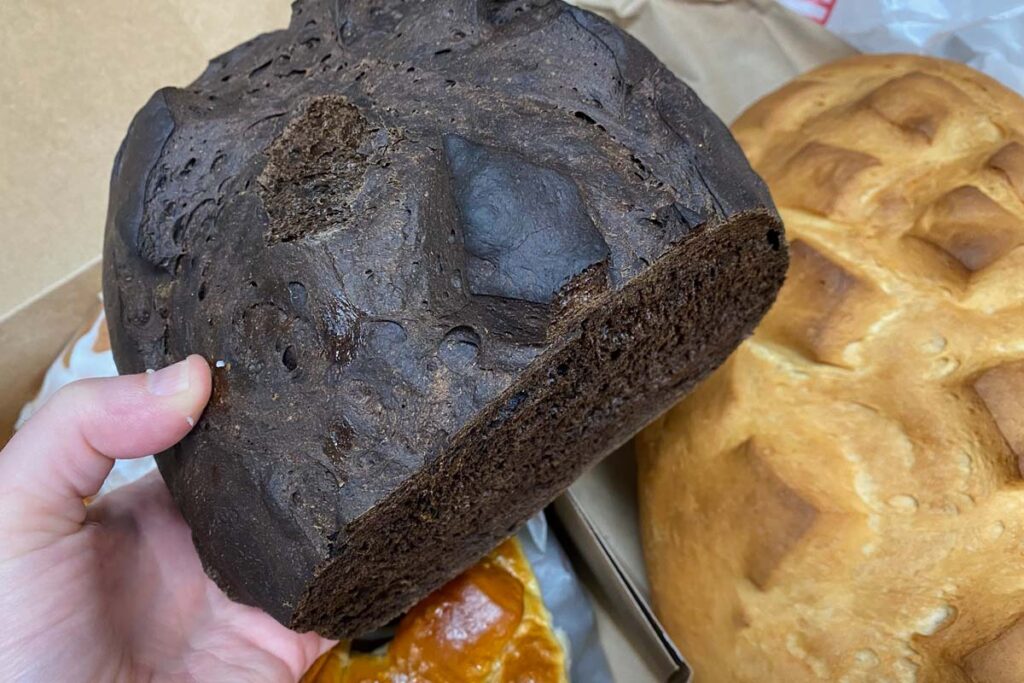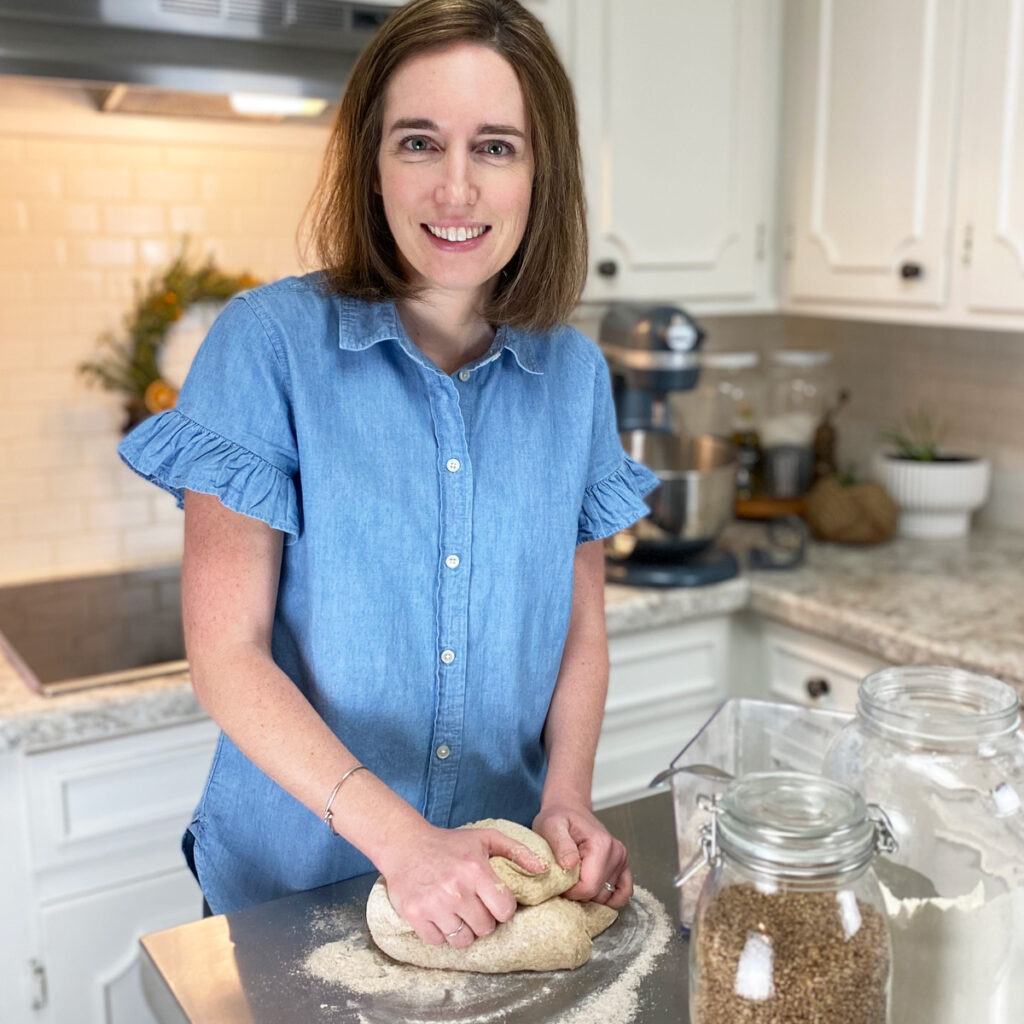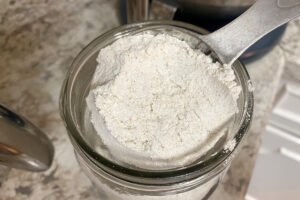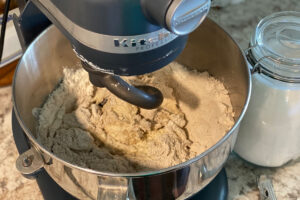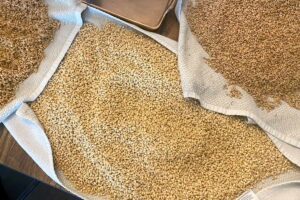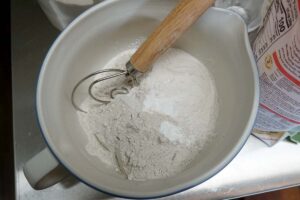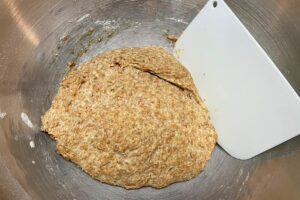Pumpernickel is a rye bread variety that was first made in Germany during the mid-1400s. The term pumpernickel means ‘difficult to digest” as the bread can be very thick and dense, depending on how it’s made.
Traditionally speaking, the ingredients used to make pumpernickel are known for their deep hue, sweet notes, and impressive nutritional profile.
While the nutritional value of bread depends on how its made, you may wonder if pumpernickel bread is as nutritious as they say.
Whole grain foods, for instance, are full of fiber, minerals, and vitamins that support our well-being. So, is pumpernickel bread whole grain?
Let’s cover the answer in this post, going over the ingredients used to make pumpernickel, its health benefits, and potential adverse effects related to its consumption.
Pumpernickel bread: The basics
German pumpernickel bread is traditionally created with a mix of dense rye flour, rye grains, and whole-wheat flour. It requires a gradual fermentation sourdough starter instead of instant yeast, which helps develop it’s flavor.
American pumpernickel bread, available at grocery stores and some bakeries, gets away from the whole grain ingredients and slower fermentation times and can involve flavoring additives, instant yeast, and other additional ingredients.
Pumpernickel bread ingredients
German pumpernickel bread is actually made from rye bread, so its primary ingredient is rough rye flour. Rye gives the bread its strong brown color, intense flavor, and dense consistency.
(Funny story, I went to a German bakery in Fredericksburg, Texas and asked for a loaf of rye, pointing to the pumpernickel. The young woman behind the counter told me it wasn’t rye, but pumpernickel. So it’s a commonly misunderstood that pumpernickel is actually rye!)
Other than fresh-ground rye flour, the bread’s other ingredients can include:
- Whole rye berries for added texture
- Wheat flour, which is added to help soften the texture and help the bread rise
- Sourdough starter
- Cracked rye kernels for added texture
- Unsalted sunflower seeds, dry roasted, for added texture
- Salt
The acidic sourdough starter also gives the bread a lightly tart flavor, which sets the loaves apart from other bread. The starter also has some health benefits, as it’s a good source of antioxidants.
Is pumpernickel whole grain?
Yes, pumpernickel can be whole grain, but to know for sure, you have to know the ingredients used to make the bread because most pumpernickel in the U.S. is not whole grain.
Although there are different definitions out in the world, I consider “whole grain bread” to be bread made from 100% whole grain flour. But, what’s whole grain flour? It’s when NONE of the grain’s three parts (the germ, endosperm, and bran) were removed after it was ground into flour.
Unfortunately, most bakeries and grocery stores in the U.S. do not use whole grain rye and therefore most pumpernickel breads are NOT whole grain. Why?
- Whole grain rye flour is not sold commercially. Rye flour has the shortest shelf-life of any other grain. Once ground, rye flour deteriorates in just 5-6 weeks making it unsuitable to be sold as 100% whole grain. It’s not possible to mill rye, package it, get it to distributors, and get it to grocery store shelves in time so in order to prolong its shelf-life
- Most commercial mills will remove the bran and germ to extend the shelf life and to make the flour more palatable to bakers, but it means that you’re making it closer and closer to standard white bread
- There are no U.S. government-standards for what the term “rye flour” actually means. If you buy rye flour from the grocery store there will be no transparency for how much germ and bran has been removed but knowing its short shelf-life, if rye flour not stored in the freezer it’s not going to be 100% whole grain and if rye bread isn’t advertised as made from fresh-milled rye berries, it’s not going to be 100% whole grain
This is why store bought rye bread or rye flour is only partially whole grain and why it’s important for you to make your own pumpernickel.
Try to buy stone-ground rye flour from an independent mill, as they’ll be able to let you know how much of the bran and germ have been removed (you want to keep all of it!).
Pumpernickel benefits

How can eating 100% whole grain pumpernickel help your health? Is it really worth it to go through the hassle of finding fresh milled rye flour?
Improves immunity
Pumpernickel contains manganese and selenium. Manganese can help the body maintain a proper immune system, while selenium defends the cells against infection.
These important nutrients may help your body fight infections and disease.
Research suggests that as rye is higher in bioactive compounds and fiber, whole grain rye bread could defend against breast cancer. (Which is so great!)
Aids in constipation
I joke with my family that monitoring their poop is a great way to gauge the health of their body. As gross as it can seem, it’s true and we should not shy away from talking about this. Do you go #2 every day, or ideally, twice a day? If not, you need to look at your diet and how much water you drink.
Prioritizing high-fiber foods can encourage better digestion. This may be down to the fiber, as well as the various nutrients that are found within whole grain foods.
A study found that rye bread can improve mild constipation symptoms compared to white bread and popular laxatives, all without related gastrointestinal side effects.
Supports weight loss
Whole grain bread, like pumpernickel, is better for your well-being compared to refined grain bread.
For instance, a typical slice of white bread contains 75 calories, 1.6 grams of sugar, and just 0.76 grams of fiber (see here for my thoughts on how many grams of whole grains you should be eating per day).
Pumpernickel bread has 80 calories, but just 0.2 grams of sugar and 2 grams of fiber. With WAY less sugar than store-bought white bread, as well as more fiber, it’s a better bread choice if you’re going to choose bread (even though you need to be eating your carbs last, after eating veggies, fats, and proteins first).
Aids diabetes management
I talk a lot about rye and diabetes here, as I’ve been personally impacted by gestational diabetes, Rye grains, like pumpernickel, have been looked into for their glycemic effects on diabetes patients.
A study found that pumpernickel generated less of an insulin response and led to considerably lower glucose compared to white bread.
But, this kind of research can be misunderstood, driving people to think eating whole grains prevents high blood sugar, which is obviously what you’re trying to avoid with diabetes. I find my blood sugar to be better managed when I:
- Understand that grains in general are difficult for diabetics. Yes, whole grains are better than processed grains, especially if you have diabetes, but eating a diet full of meat and vegetables, with small amounts of whole grain foods, is best for a diabetic. This is hard because so many foods we love don’t fit into this category, but it is the truth
- Ensure my whole grains are truly whole grain. Many prepackaged foods will be marketed as whole grain, but contain a lot of extra ingredients (this is unfortunately the case with a lot of store-bought rye breads). I stay away from prepackaged foods and eat whole grains that I make myself, ensuring that they are truly whole grain
- Eat whole gains with a high-protein meal. If you’re wanting to prevent blood sugar spikes it’s important to eat your vegetables and protein first. By consuming high-fiber veggies (preferably in a vinegar) and your eggs, steak, chicken, or fish first, you’re helping your body’s response to eating whole grains. Making it a habit to eat protein first can help reduce a glucose spike
- Mange my portion size. Like any other foods, just because it’s whole grain doesn’t mean the serving size doesn’t matter! Enjoying a portion size that I know my body reacts well to can help keep my blood sugar levels healthy
So pumpernickel and rye breads are better for diabetics, but they are best avoided altogether until you get your diabetes under control and then added back in very small amounts.
Pumpernickel and wheat
People with wheat allergies should take care when eating pumpernickel.
Rye is the primary flour found within the bread. Even though rye flour doesn’t contain wheat, it does contain gluten.
Individuals with wheat allergies often have Celiac Disease or gluten sensitivities.
A lot of bakeries that produce pumpernickel add in wheat to make it more palatable to American’s, who have been conditioned on white, store-bought bread. So always ask before you eat pumpernickel!
Final thoughts
Pumpernickel can be a whole-grain bread that’s full of important nutrients, but unfortunately, most pumpernickel bread available is made with rye flour that is not 100% whole grain.

